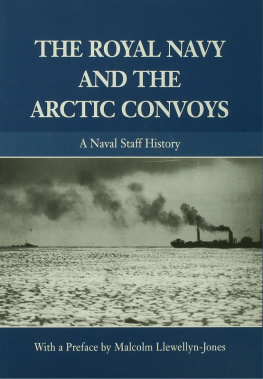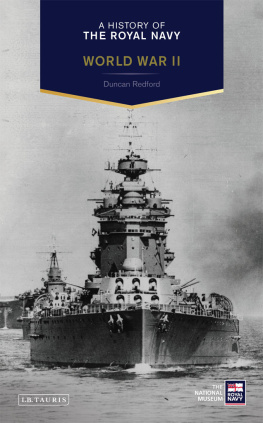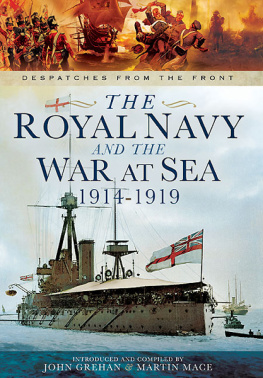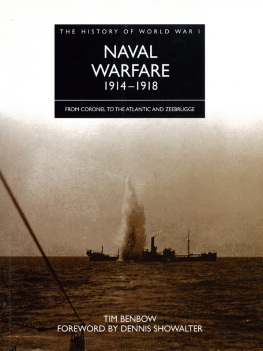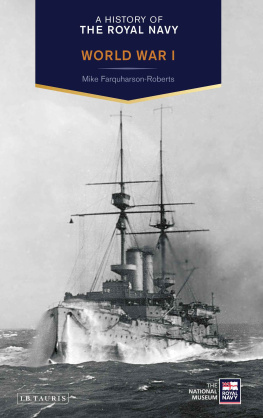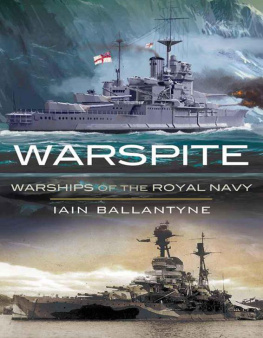THE ROYAL NAVY AND GERMAN NAVAL DISARMAMENT, 19421947
CASS SERIES: NAVAL POLICY AND HISTORY
Series Editor: Holger Herwig
The series will publish, first and foremost, fresh quality manuscripts by research scholars in the general area of naval policy and history, without national or chronological limitations. Furthermore, it will from time to time issue collections of important articles as well as reprints of classic works.
1. Austro-Hungarian Naval Policy, 19041914
Milan N. Vego
2. Far Flung Lines:
Studies in Imperial Defence in Honour of Donald Mackenzie Schurman
Edited by Keith Neilson and Greg Kennedy
3. Maritime Strategy and Continental Wars
Rear Admiral Raja Menon
4. The Royal Navy and German Naval Disarmament 19421947
Chris Madsen
5. Naval Strategy and Operations in Narrow Seas
Milan N. Vego
THE ROYAL NAVY AND GERMAN NAVAL DISARMAMENT 19421947
CHRIS MADSEN
University of Calgary
First Published in 1998 by
FRANK CASS PUBLISHERS.
Published 2013 by Routledge
2 Park Square, Milton Park, Abingdon, Oxon OX14 4RN
711 Third Avenue, New York, NY, 10017, USA
Routledge is an imprint of the Taylor & Francis Group, an informa business
Copyright 1998 Chris Madsen
British Library Cataloguing in Publication Data
Madsen, Chris
The Royal Navy and German naval disarmament, 194247.
(Naval policy and history; no. 4)
1. Great Britain. Royal Navy History. 2. Germany. Kriegsmarine History 3. Disarmament History 4. World war, 19391945 Naval operations
I. Title
940.545
Library of Congress Cataloging-in-Publication Data
Madsen, Chris, 1968
The Royal Navy and German naval disarmament, 194247 / Chris Madsen
p. cm. (Cass seriesnaval policy and history; 4)
Includes bibliographical references and index.
1. Disarmament. 2. Germany. KriegsmarineHistoryWorld War, 19391945. 3. Great Britain Military relations Germany. 4. GermanyMilitary relationsGreat Britain. 5. Disarmament.
I. Title. II. Series.
D771.M29 1998
359.0094309044DC21 | 97-30156
CIP |
ISBN 13: 978-0-714-64373-1 (pbk)
All rights reserved. No part of this publication may be reproduced in any form or by any means, electronic, mechanical, photocopying, recording or otherwise, without the prior permission of the publisher.
Contents
Generous funding from Canadas Department of National Defence, the Department of History and Faculty of Graduate Studies at the University of Victoria, and the Social Sciences and Humanities Research Council of Canada made research and travel for this book possible. Material is used with permission from the keeper of the Churchill College Archives Centre, the trustees of the Liddell Hart Centre for Military Archives, and the Montgomery committee at the Imperial War Museum. The author extends his special thanks to Dr. David Zimmerman, Dr. Perry Biddiscombe, Dr. Michael Hadley, Dr. Holger Herwig, Dr. Mariel Grant, Dr. Patricia Roy, Lieutenant-Commander Doug McLean, Dr. Roger Sarty, Lieutenant-Commander Bill Glover, Dr. Bill McAndrew, Dr. Carl Christie, Dr. Terry Copp, Bill Kenny, Commander Bill Fenrick, Timothy Mulligan, Kathleen Lloyd, Jim and Gail McCaul, Peter Wilson, and Dr. Hugh and Patricia Johnston. Robert Easton and his staff at Frank Cass improved the final product considerably. Michael Stone was the copy editor. Finally, the author must acknowledge the patience, hard work, and support of his wife Sin. She started him on the academic track many years ago.
This book examines the validity of the commonly accepted argument that the British in general and the Royal Navy in particular were so engrossed in 1945 in the coming of the Cold War that they dragged their heels on German disarmament in order to harness Germany to their crusade against Stalinism. Chris Madsen has re-examined this hypothesis, having conducted multinational archival research in Britain, Canada, Germany and the United States.
On the basis of his impressive international research, Madsen first examines British wartime planning for German disarmament; then traces the Royal Navys efforts at disarming German shore facilities and floating assets, and the level of German cooperation in this undertaking; next he details the degree of cooperation between British and Soviet occupying forces; and closes with a succinct summary of his findings and their impact on the established historiography. Especially in the chapters dealing with the scientists, archives and admirals (7) and with the war crimes trials (8) he shows a balance and maturity remarkable in such a young scholar. Madsens sensational treatment of the Royal Navys support for Kriegsmarine courts martial for alleged deserters and shirkers well after the first soldier of the Reich, Adolf Hitler, had deserted via suicide on the last day of April 1945 is sure to elicit much debate.
In short, this book is highly revisionist in the best sense of the word; it challenges well-established and widely accepted generalizations on the basis of solid research and cogent argumentation.
Holger H. Herwig
Series Editor
In June 1919 in a final act of defiance, German sailors scuttled the interned warships of the German High Seas Fleet in the British naval anchorage at Scapa Flow. The Treaty of Versailles appeared to end forever the German threat to the Royal Navys control of the sea lines of communications to the British Isles. The Allied powers banned Germany from ever possessing the dreaded U-boats, reduced the German surface fleet to a coastal defence force of obsolete battleships, light cruisers, and destroyers, and limited the number of naval personnel to 15,000. Less than twenty years later, the Royal Navy once again found itself in a life or death struggle with a resurgent German navy in the Second World War.
Even before the Allies stemmed the tide in 1943, the Royal Navy began to plan for the final elimination of German naval power. Mindful of the failure in 1919, the Admiralty was determined that it would not repeat the same mistakes with the Kriegsmarine. During the final three years of the war, the Royal Navy planned carefully for the dismantlement of every aspect of German naval power. Everything, from the warships and submarines which proved such deadly foes to the shipyards that built and maintained them and the shore establishments which trained and administered their crews, was designated for disposal. In the first two years of the immediate post-war period, implementation of the plans for German naval disarmament was a top priority for the Royal Navy. Despite the great importance placed on this programme by the Admiralty, an account of the planning and carrying out of the Royal Navys scheme for terminating German naval power has never been told. This study, based on available archival material, is the first examination of the extraordinary project.
A preoccupation with Great Britains role in the origins of the Cold War has inhibited critical assessments of Germanys disarmament and occupation in the immediate post-war period. Revisionist historians argue, in various degrees, that British political and military leaders recognized the Soviet Union as a potential enemy before the end of the war against Germany, and sought out Allies in Europe and across the Atlantic to meet the new threat.1 They also suggest that British planners considered an economically and militarily strong western Germany as a possible addition to a future alliance of Western nations. The presumed ascendancy of the belligerently minded Chiefs of Staff over the more moderate Foreign Office in the field of post-war planning underscores the argument.2





